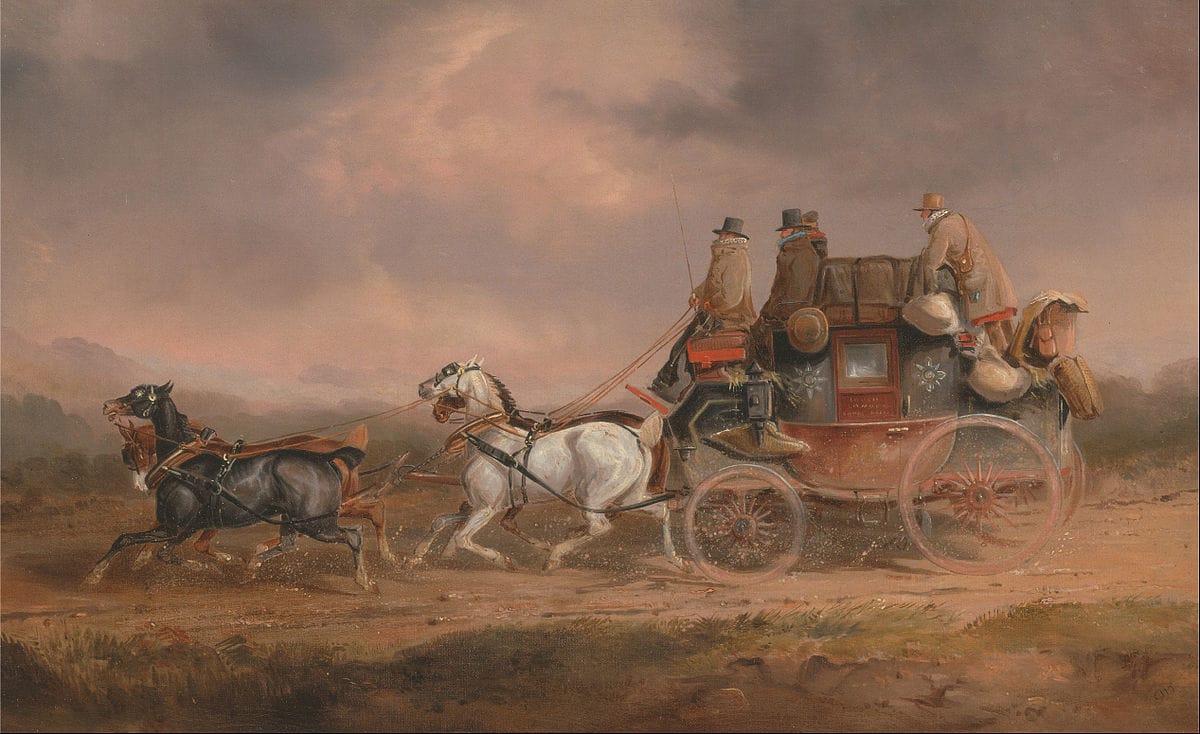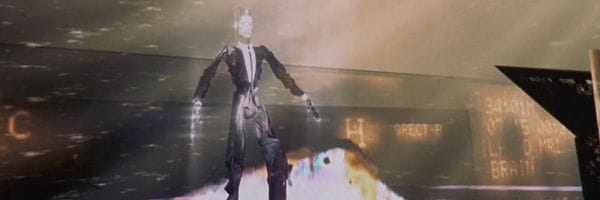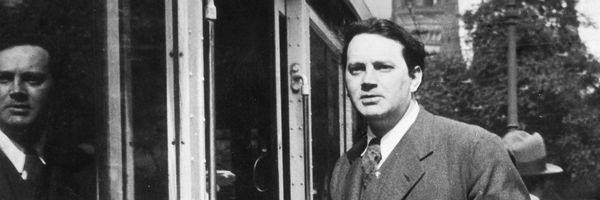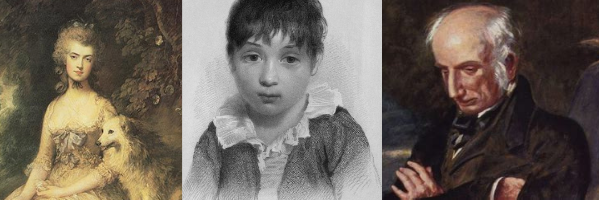On Suspension Considered as one of the Fine Arts

A literary exploration of the art of cancellation as understood through Zadie Smith's "Now More Than Ever" and Evan Harris' Suspended.
There are among us extraordinary artists, though the artistry of their craft is little acknowledged. We must occasionally review the scope of what we consider to be "the fine arts" and recognize the work being done by some of our society's most remarkable individuals. In 1827 and again in 1839, Thomas De Quincey addressed our diminished understanding of the fine arts by explaining how it is that murder should be counted among this class. I take the title of this post from him, with one obvious alteration.
One central flaw in our appreciation for this act is our terminology. "Cancellation" reads too much as a dry business action. A contract, upholding certain legal terms, is cancelled, or an event had been scheduled to occur, but now it is cancelled – it will simply not occur. This may be unfortunate and may dash some people's hopes, but not everything comes to fruition. Cancellation, in the business of daily life, is a normal occurrence. The corporate stamp coming down on the business decision, however, is but one small act in what is meant by "cancellation," a process which makes exceptional use of radically new social structures. To correct this flaw of terminology, recent events will be considered alongside fictional ones ("Now More Than Ever" by Zadie Smith and Suspended by Evan Harris) and a masterpiece of an essay by Thomas De Quincey ("The English Mail-Coach").
Another name for "cancel culture" is "call-out culture," but this does not work either, and for the same reason that "cancellation" falls short. It is just another small act in what is meant in the larger sequence referred to culturally. A call-out is an interpersonal exchange regarding something which may be remedied. An appeal to mighty external powers for the other's destruction is far different. In "Now More Than Ever," this mighty power is the collective will of the online-attuned masses. In Suspended, it is the institutional authority of the school manipulated through relatively new technological abilities. In recent news, it is Skai Jackson using this new digital apparatus, coupled with her lifelong celebrity, to persuade educational institutions to suspend (or equivalent) young people across the country. The thing about this apparatus, though, is that it is not just Jackson. As noted in the linked article, she has received over 3,000 messages from others (including others also of some level of social authority) joining in the action. Jackson may call individuals out, but clearly the scale is far beyond any normal interpersonal exchange.
The scale and rapidity of this online environment is an enemy to established standards of narrative fiction, but this is precisely why narrative fiction is also so well equipped to help us understand what is happening. In normal life, we can get by with an insufficient understanding of what precisely we are doing in our hyperconnected lives. You learn to do certain things, and so long as they keep working, you keep doing them. Occasionally you are nudged in this or that other direction, and you can continue along in some level of peace. Crafting fiction, though, is not passive living. It is artifice, and to be done well, this requires the parts be thoroughly understood. As I have written previously, this often means intentionally moving one's setting away from the present, to what is known – not just in terms of historical fact, but narrative frameworks. In writing contemporary-set fiction, writers need to think critically about that setting and develop novel ways of depicting it.
Just half a year ago, Vox questioned if cancel culture even exists, because it "usually doesn't work." Their focus, however, was strictly on public critiques of public figures. When used against those who are rich, famous, or powerful through some other means, cancellation is not art. Though they are still subject to the ways in which life is now hyper-public and global, so too is most of their intentional professional life. They function like the centuries of murders which De Quincey deemed "utterly unworthy of notice," in which "there is nothing to excite our wonder." De Quincey traces the art of murder back to Cain's murdering of Abel, and writes of a recent advancement of the art through the Ratcliff Highway murders, which he believed to be committed by acquaintance John Williams. In a similar manner, cancellation shines as a fine art when enacted between peers and upon the vulnerable.
The Radio in the Foreground, Impending Doom in the Back
In Zadie Smith's 2018 story "Now More Than Ever," the concept of cancellation is reserved only for celebrity (an unnamed but clearly pro-Trump Kanye West character). In that context, the dehumanizing rhetoric fits perfectly: if a media figure loses enough support, his media events will be cancelled. The collection of all these events are wrapped up within the public figure himself, and so he can be cancelled. When applied to the rest of us, "cancelled" functions through this same logic, even when one lacks the network and wealth to negate any material damage. Even in the case of Kanye West, though, Smith's narrator rejects this dehumanizing view. She refers to him first as a "poet" and then corrects that actually he is a "philosopher." In an interview the previous year, Smith commented, "I do think you should be able to retain the right to be wrong. I’m wrong almost all the time. It’s OK to be wrong. It really is OK, you just have to sit in the feeling and deal with it." This is not true for a media figure as such – one who exists only in so far as he sells tickets or content in large quantities – but it is true of an artist, a philosopher, or a private citizen. The freedom to be wrong (which is often, more accurately, the freedom to be perceived as wrong by dominant social views) is essential to developing original, worthwhile ideas in philosophy or art. De Quincey expresses in "On Murder": "if a man calls himself a philosopher, and has never had his life attempted, rest assured there is nothing in him." Even if some thoughts may turn out wrong, this freedom is what allows critical development.
The reverse of this forward-moving freedom is the obsession with constantly re-narrating the past in "Now More Than Ever." The narrator's friend explains the need for seamless existence through a puppet with long arms: "you’ve got to make sure that when you reach back thusly you still understand everything back there in the exact manner in which you understand things presently." That is to say, no substantial growth can occur, and even when one is responding earnestly to what has been more recent changes across society, one still needs to be able to portray that earlier past as though your values then were exactly as they are now. Smith demonstrates the possible abuses of this through a bitter man deciding he could frame the kinky behavior of his ex-girlfriend as out of sync with her public, professional persona. On a small scale, this is already horrific for most people, such as when a person shares intimate information with a person's family for the purpose of causing harm. Our communication networks, though, are much larger than just this. He starts "texting everybody in Natalia’s address book to let them know," abusing the fact that her entire social and professional network is digitized and thus flattened into one big list and easy to copy.
The expected consistency is impossible, because changing standards means people must change in the present and then "you’ll simply have to find some way to remake the connection, and you’ve got to make it seamless." In a volatile, sometimes seemingly arbitrary environment, however, remaking one's past is not always possible. In a crude instance, the story opens with the narrator dismissing her friend Mary because her name has grown unfashionable. Broadly speaking, unfashionable is distinct from a moral failing, but what is fashionable is "To be seen to be good." This creates an infinite hierarchy. While most of the story is the narrator being subject to the social instruction and judgement of her more deeply online friend Scout, the story open with the narrator performing a parallel role with Mary, trying to teach her how to keep up with the current expectations of their society. Scout – as someone who "is on all platforms, and rarely becomes aware of anything much later than, say, the three-hundredth person" – is in-the-know of what is currently acceptable, while those who are less tuned in must constantly struggle to not step outside that narrow frame.
As an allegory for how this can sometimes seem to function in real-life, Smith provides a very on-the-nose visual for what is a much more complex system of social relations. Avoiding showing the mix of in-person relations and electronically networked connections (something difficult to do), Smith instead has her narrator's university colleagues live together in an apartment building and this spatial closeness allows them to perform a physical-world ritual of pointing arrows out their windows toward someone else's apartment. Though the story starts with noting there is a general urge "to be seen" (among other things), this attention is understood as wholly negative, going beyond judgemental to the point where people wonder how the professor who is the primary recipient of pointing is still employed. Other than a small contingent of Marxists "who like to argue that the whole process is fundamentally Stalinist," the effect of the ritual is that most people feel compelled to take part, and so we see the three biggest targets working together to point instead at the narrator as a "purely defensive move" to "distract attention." What happens with the arrows being so publicly visual (like with actual social media) is that one's stance is public and so one typically must take a stance and it should align with the majority.
The language Smith uses for someone being so soundly rejected is not primarily "cancelled," but "beyond the pale." What this phrase emphasizes more is the culture of no reconciliation. The point of the pale is that you can't come back. In some cases, this doesn't really mean all that much. Smith uses "cancelled" just once, in the last sentence of the story, detailing two cancellations occurring in quick succession. In these cases, first a well-connected celebrity is criticized but continues on as successful as ever, then a professor is socially rejected by her academic circle for sympathizing too much with those who are seen as "the guilty." Besides the dehumanizing sting of the "cancelled" metaphor, the story does not show this to have any substantial consequence. To the contrary, the narrator had already felt that to be "finally placed beyond the pale ... might feel curiously free." The story is concerned heavily with time, seen further in its title "Now More Than Ever," a saying which erases historical struggle to present a sense of ever-increasing urgency as part of call to action. Over the course of the story, the narrator watches an old movie with Scout, and there is a cultural loss in limiting how we are able to think about such material, but more notable is a set of two email exchanges with a high school student.
The student is shown to be largely clueless about the very serious topics the narrator writes about, and yet he is by no means excluded from the social mechanics within which one's past and present must always be in line and one's present must also, at the same time, keep up with different fashions. The ritualistic behavior of the arrows is effectively a game in which the tenured professor cannot actually be fired, and yet this fosters a growing power governing the world that student will inherit. We do not see him do anything which would move him beyond the pale, but that power can destroy him, and then there is no return, no forgiveness.
The Alienation Effect Goes Online
Such power exists systemically as "zero tolerance policies," the subject of Evan Harris' computer-based story Suspended. The story concerns a middle school student in a small town. A poster in his school features a comical, already-edited image of the school Principal, and the student sends a photo of this to some friends via a fictional equivalent of Snapchat, accompanied with an unstated homophobic joke. The post is screenshotted and shared, making its way to the school administration. The boy is suspended for months, with the suspension being extended, and when the family eventually tries to contest this, the Principal retaliates by escalating the issue through pressing criminal charges. The post – from a child, made through the unthinking quickness of modern apps, and distributed to a private selection of friends under the expectation of ephemerality – is taken as a threat of violence rooted in hatred. The situation is complicated, with no historical precedent for understanding how a young teen developing social awareness is to understand something like Snapchat, which is only newly technologically possible; nevertheless, a policy of "zero tolerance" means there is no room to think through such matters.
Occasionally throughout the story, Harris cites studies on the effects of zero tolerance policies in schools. One report, from the Justice Policy Institute, claims:
Students who are suspended are more likely to repeat a grade or drop out than students who were not. The Texas study, considered the most thorough analysis of school discipline policies and their effects, looked at data from every seventh-grader in the state in 2000, 2001, and 2002, then tracked their academic and disciplinary records for six years. They found that 31 percent of students who were suspended or expelled repeated a grade, compared with only 5 percent of students who weren't.
Harris' story demonstrates many of the reasons why this might be the case. Though the boy's grades mostly go up while suspended, it is a struggle to keep interest while excluded from what is typically seen as the core part of education. He can meet weekly with teachers, but misses all normal classroom instruction and the chance to work in a structured way with peers. He loses much of his social life, which had been based around friends in school, compounded with being grounded and losing access to online communication. When teachers interact with him, they have to be careful not to be seen as taking a side with or against the Principal. Rumors spread among other parents. A suspension (compared to an expulsion) is finite, but in this context can have the effect of going "beyond the pale." His early, private apologies to the Principal were rejected. What exactly would it mean to come back – from suspension, from court – and have a normal continuation of his education?
In removing him from school for months, and then continuing to escalate things, it is shown that education and growth is not the point. The point is punishment. From a more judgemental perspective, the point appears to be cruelty, and so the family grows to resent the Principal. What of this is settling the social tensions that were the original concern? Why would the student (seen as immature) suddenly feel inspired to grow, if he seems to be only allowed to move in a negative direction? And how is it not a rejection of the value of education if it is imagined that the boy would emerge better if removed from classroom education for several months? The story offers a largely optimistic outlook, where the boy is truly sorry he might have caused offense, but even when he sees this sentiment is not something in which anyone was ever interested, continues to dedicate himself to excelling academically, athletically, and socially.
The trajectory of the story is drawn out. We see how this all progresses day-by-day, week-by-week. New developments and complications emerge, and the boy is not just academically suspended, but his fate is held in a state of suspension as well. Will he be part of the 31% who have to repeat a grade? Will he fail the state test for algebra, given the reduced help in his most challenging subject? Will he face criminal charges? What will happen when he starts to interact again with his peers and teachers, or returns to the school under the authority of the same Principal? That is all just short-term implications. The school guidance counselor warns the mother, "that the boy's post could haunt him, stay in cyberspace forever, keep him from getting a job in the future, ruin his reputation permanently." The policies of the school and how aggressively the Principal pursues the matter are one issue, but how we all collectively approach such situations is more within our control. Will we all point our arrows out at him?
At each step, we are not just reading what happens, but making decisions. The story is crafted as an online survey, and so frequently pauses to invite readers to associate with one among a list of opinions, to fit a response onto a sliding scale, to check off a list of which points are most relevant, and so on. This is interactive level is not used to create a branching story, but instead responses should be "viewed solely as a hypothetical reality check." Harris styles the story to do two things:
- Give a careful, fair assessment of the boy's actions and perspective, such as the way his remarks may derive from personal sexual anxieties.
- Turn some of the attention onto the reader, who must self-assess each step of the way. In filling the survey, it is not just one action (an arrow, a retweet, a quick post backing an existing criticism) but continual contemplation of the implications of a long sequence of actions.
One question asks, "At the end of this, the boy will have missed three months of school. What does that say?" You must answer either "Punishment is more important than education" or "Punishment is education." Often there are open fields that allow you to type any other thoughts you might have, but sometimes you have to choose which of a select list of stances appears closer to the truth. Elsewhere, you are asked to rate the statement "After all, the boy's no angel" on a scale of 1-5, with "1 being unenthusiastic to 5 being enthusiastic." It is easy to read a story and see this all play out, but in making choices in a survey (even if the story is already complete and your choices do not weigh into anything), you are made repeatedly complicit with the judgements and decisions which occur over the course of months.
Like with the arrows, those who are forced to take any surrounding part in this whole situation are then in turn subject to the dynamics at play. It is not just a punishment for the boy, but the whole family suffers from it, and his peers understand the punishment as a threat that they could easily be next. The boy's younger brother is upset and confused by the whole situation, and grows increasingly reclusive for a time. The boy's mother has to take an extended break from work to watch her son, help him with schoolwork, and drive him around to various school meetings, therapist sessions, court dates, etc. The leave of absence is clearly an immense help (and the boy's academic success is perhaps due to this decision), but this is only possible within specific circumstances:
Is it a paid leave of absence? What about health insurance? Is her job guaranteed when she's able to return? And what about the other questions that ram through the boy's mother's head as she dwells simultaneously upon the impossible demands of the situation and the inequity of her own luck:
- What if her husband had not received, like a miracle, that major foundation support grant, awarded at the end of the summer?
- What then?
- What if her mother did not live right here in town, ready to help?
- What if she was a single mother?
- What if she was one of the Latinx moms or dads at the school who are English language learners, who would have to do this whole thing in translation? What if she were not around and the boy's father had to do all of it in a second language?
- What would happen to the boy then?
As thoughtful as this list may seem, and though the page linked from the New York Civil Liberties Union suggests that "many student suspensions hamper, rather than improve student safety," such considerations stand against the fine art of suspension. The art is based on a perceived familiarity, allowing comfort in quick destruction. Thomas De Quincey offers us a useful comparison in his "Vision of Sudden Death."
The Ruins We Might Have Caused
In "The English Mail-Coach," De Quincey describes an experience of adjacency to state power. He gets to ride onthe English mail-coach as it speeds across England, delivering news of victory in war efforts. He understands his position not only of riding the coach but of riding the front as giving a significant level of status, not quite what is usually perceived but a closer position to the authorized coachman. He writes comically, "In dignified repose, the coachman and myself sat on, resting with benign composure upon our knowledge – that the fire would have to burn its way through four inside passengers before it could reach ourselves." The mail brings news of death, but he is at some distance from that, and can so enjoy the glory of motion and the power of the coach and its horses. He describes four elements of the particularly striking experience of his rides (velocity, the effect of lamp-light upon solitary roads, the beauty and power of the horses, and the "central intellect" of effort toward "a national result"), and concludes,
To my own feeling, this Post-office service recalled some mighty orchestra, where a thousand instruments, all disregarding each other, and so far in danger of discord, yet all obedient as slaves to the supreme baton of some veins, and arteries, in a healthy animal organisation.
At the time, this all was distinct and emerged from a core source of authority and resources that allowed such a superior build and the freedom for such velocity. It was a rare power, as the amount of people who could ride this were finite. As De Quincey presents this power, however, it is easy to imagine some level of comparison to online networks as a new "mighty orchestra." The content of the deliveries covers a wider range and it moves in all directions at once, but it comes together to the same sort of awe-inspiring force.
Before a closing section of "Dream Fugue, On the Above Theme of Sudden Death," De Quincey describes a terrible encounter one night on the coach. The coachman, he learns "was liable to the shocking affection of sleep." During one bout of sleep, De Quincey hears first distant talk and then wheels, and realizes they are on a collision course with another coach. Because he is in the English mail-coach, the stronger build and higher speed will certainly destroy the coming passenger-coach. He can neither wake up the coachman nor retrieve the reins from him. The occupants of the other carriage (a young couple huddled together) are distracted and do not see what is about to unfold, so De Quincey attempts to alert the man.
De Quincey often describes his thought process as very peculiar, drawing comically on his classical education. In this case, he recalls The Illiad, and imagines himself recreating a rough, mortal approximation of the shout of Achilles. Shouting twice, the man looks up, and De Quincey declares his work done: "Here, then, all had been done that, by me, could be done: more on my part was not possible. Mine had been the first step: the second was for the young man: the third was for God." Moving on from his own action and not yet up to the judgment of God, he slows down the narration and goes over the actions of the man seconds at a time. The man works to turn away, but without enough time to move cleanly away. All he could do now done, the situation moves to the judgment of God.
As the seconds wrap up, the carriages finally pass. The mail-coach deals a blow to the other's wheel. The impact from there will be what it will be. The woman, previously in "silence and deep peace," has a vision of sudden death, panicking as the carriage bounces along wildly. Then, "the turn of the road carried the scene out of my eyes in an instant, and swept it into my dreams for ever." Though not quite bringing the utter annihilation understood to be possible, De Quincey leaves us with a vision of a potentially fatal blow, passing in seconds, and just as quickly passing out of sight forever.
In Suspended, the boy makes a quick, ephemeral post. It was supposed to appear to a limited audience for seconds, but instead cost him months of his life. The story has some level of conclusion, but one of the last choices to make is choosing among six choices for assessing whether or not the situation is over, or if not now, when will it be over? Part of what haunts De Quincey in is dreams is the uncertainty of the half-completed image. He saw the terrified woman in a suspended state, tossed about by the carriage. He continued to rework the scene in various dreams, recording in his essay five emotional, musical scenes. As instruments of destruction move across the Internet, this consideration appears frequently absent.
As Harris keeps pointing out throughout Suspended, we have data on the impact of zero tolerance policies and the punitive measures which can sometimes take place. One solution with its own set of problems is forced therapy, such as the boy in Suspended had to do on top of his long suspension. In theory, this can help provide context and work through any personal traumas or anxieties which may be causing problems. This is at least solution-oriented, but mass efforts often become destruction-oriented. The boy was given a measurably increased chance of academic failure, imprisonment, poverty, etc. The New York Times' article on the recent online pushes for suspension or expulsion of peers cites two people pushing for long-term reduced economic opportunity:
- People who go to college end up becoming racist lawyers and doctors. I don’t want people like that to keep getting jobs.
- People think when you call out a racist student, it’s ruining their life ... But when you prevent them from advancing, you’re helping to stop the spread of racist lawyers or doctors or people who make it harder for the black community.
In neither case is the goal to make their peer less racist or non-racist. As we saw with Smith's story, it is a matter of going beyond the pale. There is no return. All that is left, then, is lifelong and cross-generational destruction. The person must be kept in or reduced to poverty. If this person is able to have children, those children will grow up in poverty, and statistically will remain there. There is an expressed disbelief in a college education as a mental, social, and ethical good, because the imagined solution here is to pressure colleges to rescind admission. To the extent that higher education might help anything, it goes against the more central long-term goal of interpersonal damage. The other person is to be kept undereducated and impoverished, and this works out in the sense that the labor of the poor is largely invisible, and those pushing this are typically insulated from their lives. Skai Jackson is rich and famous. Whatever one can do when one's reputation is permanently and globally tarnished from high school, in a culture designed around zero tolerance and zero forgiveness, Jackson likely does not ever have to interact with that person. And, because the person is inevitably a nobody within the massive scale of millions of online users, he or she is also able to be disregarded by the masses participating in the online efforts. Whatever these long-term, multi-generational impacts may be, that is beyond the timescale in which this new "mighty orchestra" operates.
Because narrative tension typically draws on conflict between specific characters, neither Suspended nor "Now More Than Ever" quite capture the scale of being the "main character" on networks such as Twitter, as @maplecocaine describes the experience of briefly passing but mercilessly chaotic global attention. In Smith's story, the narrator was judged by Scout, and then had arrows pointed at her by her department. In Suspended, the boy struggles primarily against the Principal, though other figures in power such as the Superintendent add to the conflict. The real-life situation is largely beyond our possibilities of narrative comprehension. This does not stop corporate outlets such as The New York Times or Teen Vogue from running stories glorifying the behavior. They understand that though this may exceed some of the capabilities of our narrative arts, suspension is in itself a new fine art, producing awe through the exercise of mighty powers toward the destruction of one's peers.
As I suggested at the beginning, where we fail to recognized the artistry here is in calling this "cancellation." These are not major media figures. Occasionally, the accused may have a modest Instagram or Twitter presence, but nothing is being cancelled. Things are being suspended: most prominently one's education or one's account. Moreover, our image of this action should not be the finalizing "cancelled," which imagines an abrupt conclusion. Unless people are dying – and these conditions do present suicide as a very real risk, as well as bring on death threats – nothing has really concluded besides the mass attention. These people's fates are suspended. They face a vision of sudden death, but then our electronic mail-coaches turn the corner, and those suspended in air are gone now from sight. They still exist, crucially, in that eternal archive, but the precise impact remains outside of our collective vision. That arc must conclude somewhere, but on a much longer timescale.
In mastering the velocity and power of this modern engine, these artists continue to advance the craft of this new fine art. The medium continues to see striking developments year-by-year. We must work to understand this new art form, so that its emotional impacts will not drift away, but will secure themselves forever in our electronic dreams.
To learn more about narrative challenges, computer-based writing, and the future of art, subscribe to my free monthly newsletter (be sure to confirm). I bring together the latest and greatest of my own writing, new literature, literary history, and a curated selection of other sources around the web. Sign up now and I will also be sending out an invite to a free mini-course, on literature and hyperconnectivity, delivered via email soon:





